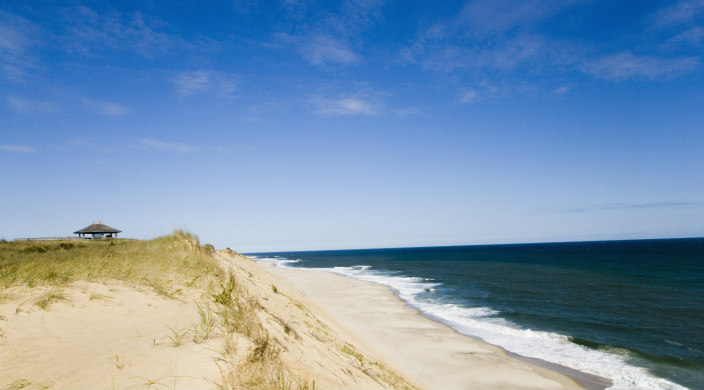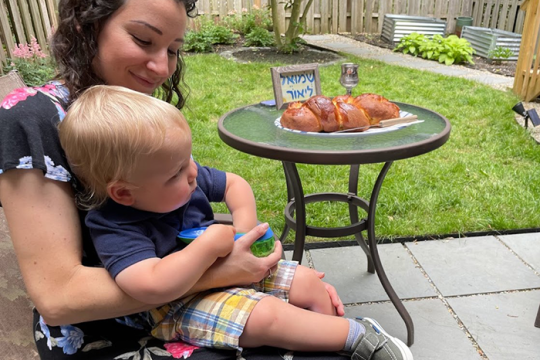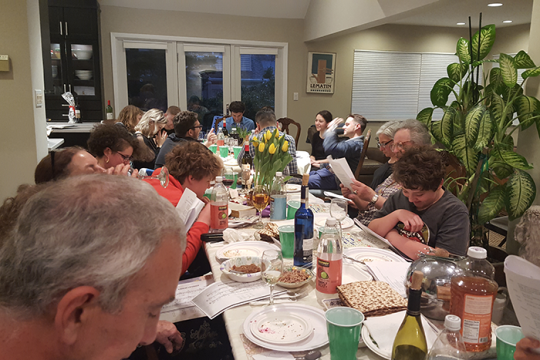
Every year, we bundle up and venture into the chilly New England air along the Atlantic coast for our family’s traditional “Seder by the Sea.” I bring a collection of Thermoses filled with matzah ball soup, symbolic foods from our seder plate, a basket of goblets, a bottle of Manischewitz wine, haggadot (Jewish text that sets forth the order of the Passover seder), a few midrashim (stories), matzah, and a handful of candles. Large blankets on the sand serve as our table.
We run to the ocean to dip our parsley in salty water to remember the tears of our ancestors. As seagulls fly overhead, we imagine the immense power of the Red Sea as it parted. When the wind gusts, we cradle our goblets and soup bowls, protecting them from wind-blown sand. My husband and children hold corners of the blanket, wrapping us when we feel chilled. We huddle closely around flickering candle flames to recite the blessings and tell stories of the Jewish journey. Best of all, clean-up is a breeze: We pick up our wildly flapping “tablecloths” and toss our crumbs to the seagulls.
Despite the Massachusetts springtime chill that often accompanies us to the beach, celebrating Passover by immersing ourselves in the elements helps us not only to remember, but also to really feel the sacrifice, discomfort, and resilience our ancestors must have felt in the face of their challenges.
Our seder by the sea reminds us never to fall into a place of entitlement, but rather to express immense gratitude for what our culture and years of history have given us: freedom of expression; the tremendous gifts of life, spiritual growth and connection; religious choice in observance, journeying, and searching; and a strong identity that celebrates our rich history and culture. Indeed, we are so incredibly fortunate.
Sadly, we are also reminded of the prejudice, persecution, and violence against innocent people of all faiths around the world. Even as Pesach teaches us about hope and perseverance amidst great challenges, it also teaches us that, even today, we must never let our guard down.
In addition to the lessons borne by the weather, though, there are other surprises and challenges. One year, for example, after we found a beautiful spot, dug holes in the sand for our candles, set out all the ritual food and drink, and were admiring the beauty in the emerging dusk sky, the quiet was shaken by deep, long, loud blasts from Scottish bagpipes that we could hear even over the roar of the sea and the rush of the wind!
No matter how we choose to observe the seder – on the shores of the sea, in the sands walked by our ancestors, or seated around our dining room tables – we are celebrating and learning together. We are not only weaving expressions of our freedom into a rich tapestry that reflects our cultural and ancestral heritage, but also creating new meaning in every seder as it celebrated with traditions from throughout the generations. Each seder provides a new opportunity for soul-cleansing, reflecting on what the story means to us in today’s world, and building meaningful connections and memories.
Jacquie Serebrani-Kesner is the founder and artistic director for Creative Arts Enrichment.
Related Posts

Harnessing the Power of our Mothers Around the Seder Table

Melding Tradition and Innovation: Our Interfaith Toddler Naming Ceremony

